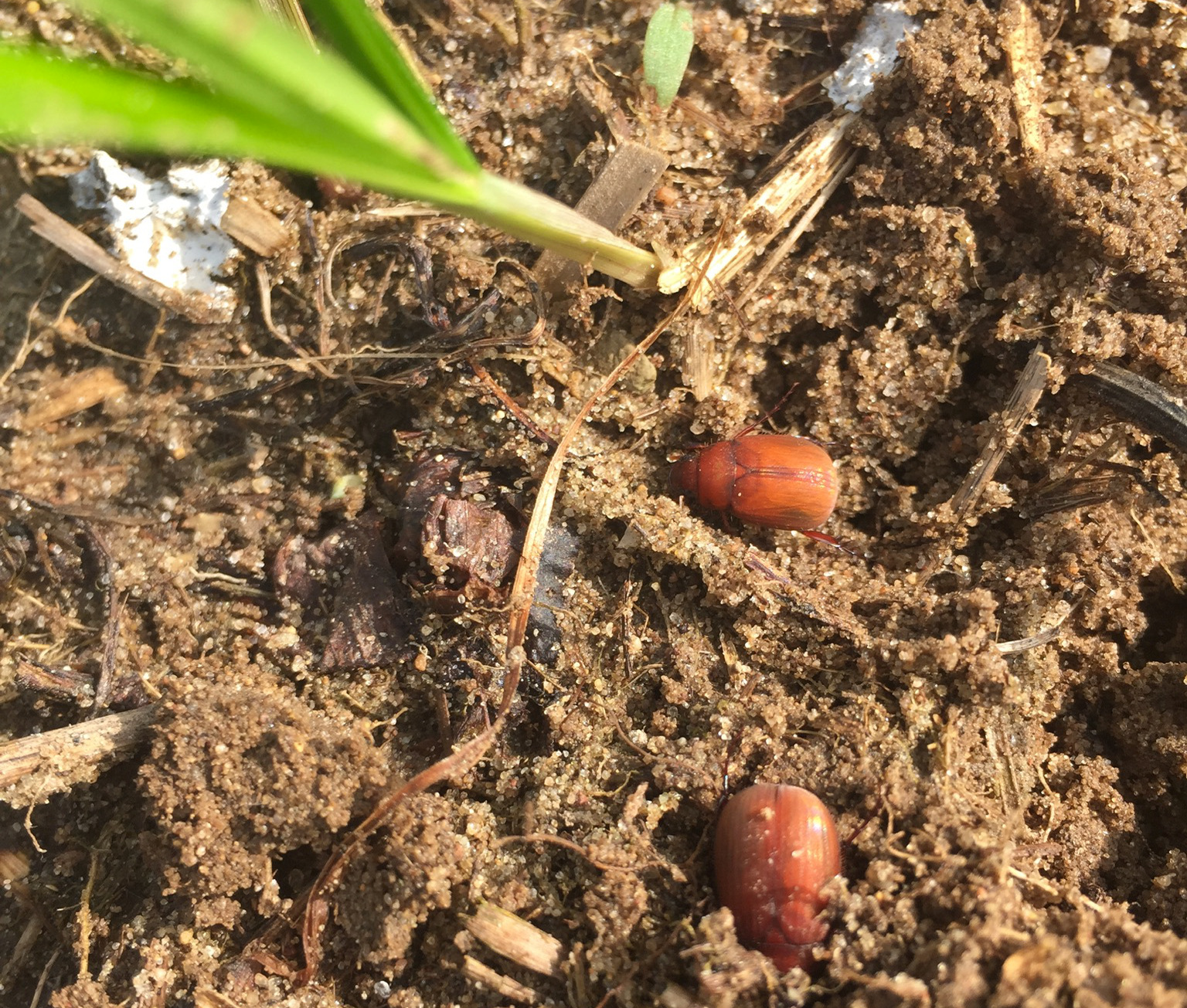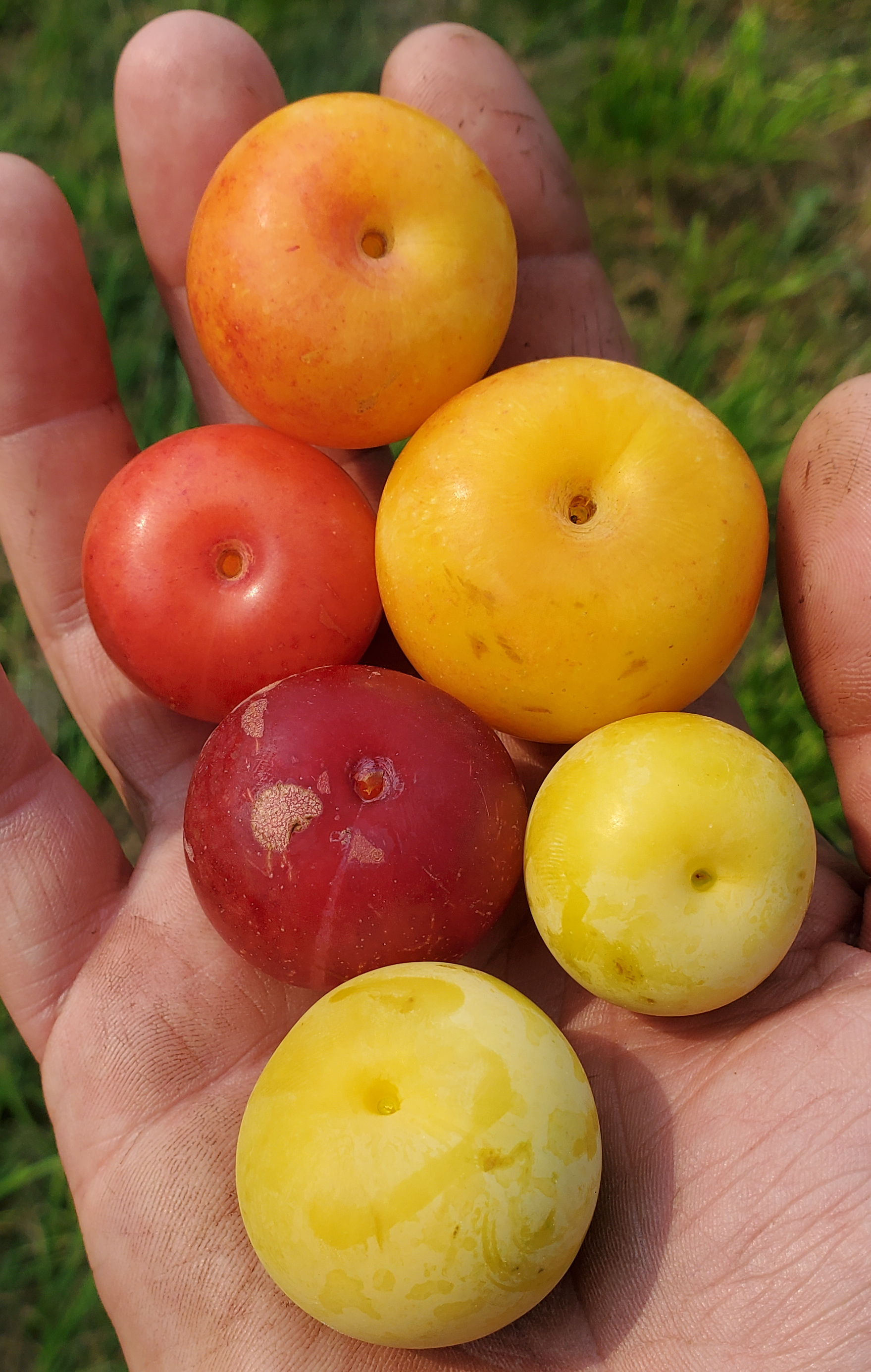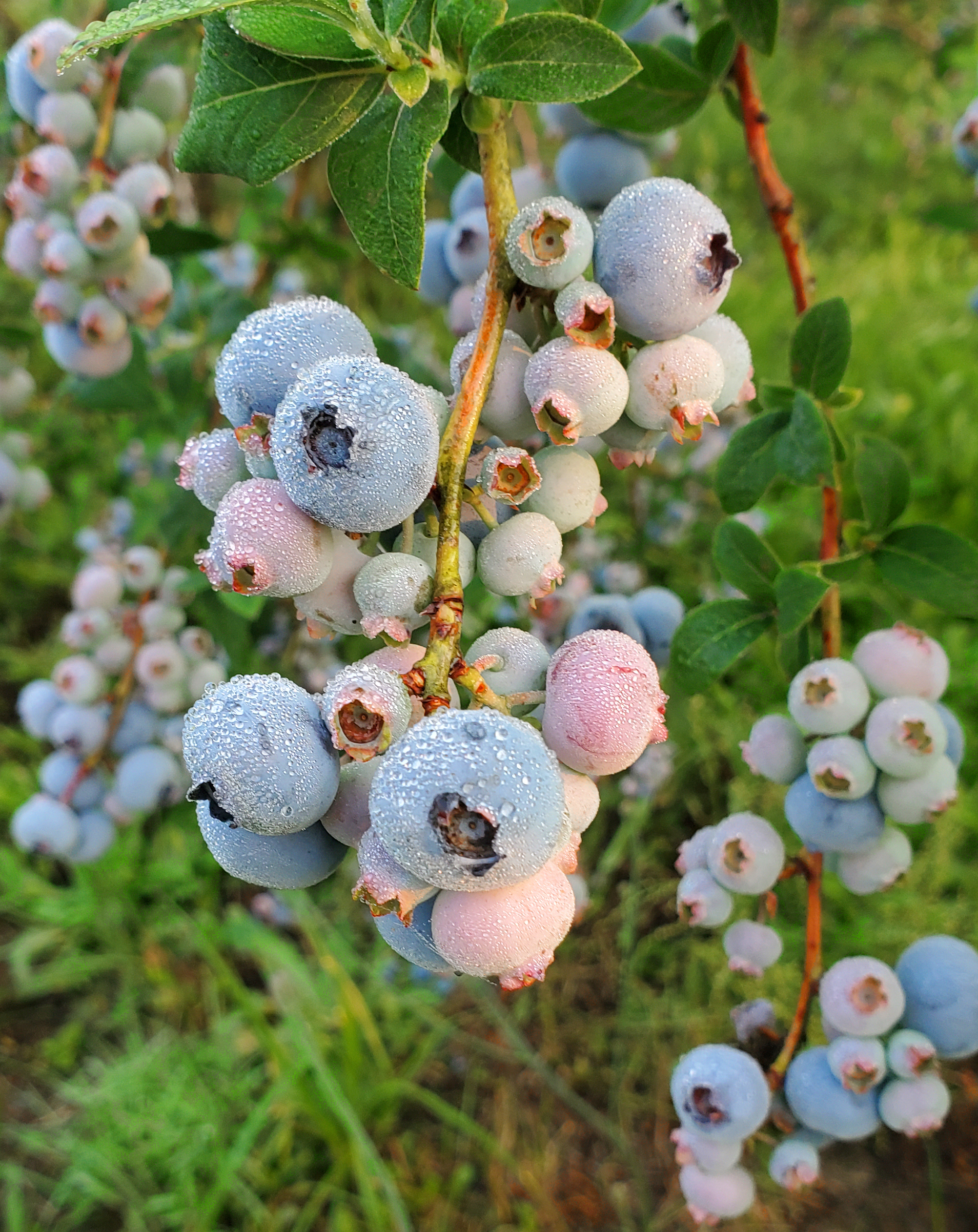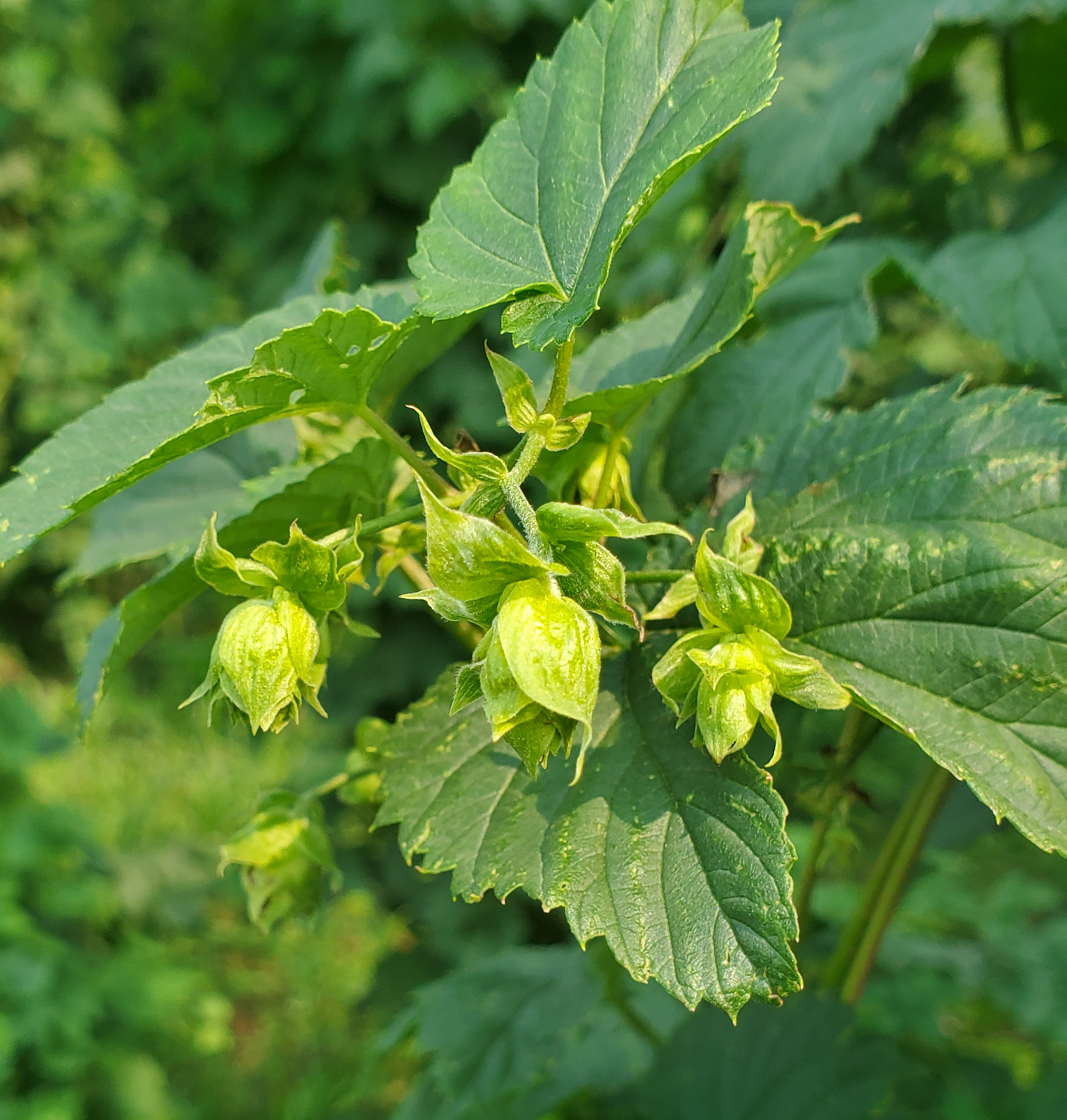Southwest Michigan fruit update – July 20, 2021
Summer insect populations are continuing to increase.

Weather
The temperatures this past week were consistent. Highs were in the mid-70s to low 80s. Lows were in the mid-60s. We saw scattered rain on Tuesday. Some areas saw an inch of rain, others saw nothing. Another system passed through on Friday and Saturday. This time most saw 0.75 to 2 inches of rain, but some areas along Lake Michigan were missed completely.
This week will be like last week, but a few degrees warmer. Highs will be in the low to mid-80s, lows in the mid-60s. The best chance of rain for will be over the weekend.
With a cooler week, we picked up a below average number of growing degree days (GDD) last week: 202 GDD base 42 and 146 GDD base 50.
|
Southwest Michigan GDD summary from March 1 - July 18, 2021 | |||
|---|---|---|---|
|
Station |
GDD 42 F |
GDD 45 F |
GDD 50 F |
|
Benton Harbor (SWMREC) |
2299 |
1988 |
1524 |
|
Lawton (Lawton) |
2316 |
2002 |
1526 |
|
Fennville (TNRC) |
2085 |
1788 |
1347 |
|
Average for the SW region |
2269 |
1960 |
1495 |
|
Average last week |
2067 |
1778 |
1349 |
Tree fruit
San Jose scale male trap catch has increased for the past two weeks in the Trevor Nichols Research Center trapline in Fennville, Michigan, signaling the flight of the next generation. San Jose scale first generation crawlers are causing damage on fruit. Japanese beetle populations are still increasing in some areas.
Apricot harvest continues in the area. Ripening fruit has increased susceptibility to brown rot.
Peach and nectarine varieties in the Garnet Beauty season will be ripe soon in central Berrien County. Red in the flesh is common in some varieties with dark red skin color. Split pits are common in some early season varieties, especially those with relatively large pits. Some varieties seem to be loosely attached this year—oblong shaped varieties seem to be more prone to this problem. Leaf drop and fruit surface pitting from bacterial spot is becoming more common on varieties with less resistance. Current rains and warm temperatures increase susceptibility to brown rot.
The most common insect problems affecting fruit is oriental fruit moth. Asiatic garden beetles are causing leaf notching on young peach trees. This relatively new pest has become a major problem in field crops.

With cherry harvest completed, chlorothalonil (Bravo, Chloronil and others) can be resumed for cherry leaf spot management.
In plums, Shiro harvest has begun in some orchards. In general, rains will temporarily make stone fruit less sweet to the taste. Plums are generally not susceptible to spotted wing Drosophila until the fruit are noticeably soft.

Apple fruit sizing has been good with the frequent rains. Earlier fire blight terminal strikes have dried, making them easier to see in orchards. Sooty blotch and flyspeck infection continues to be the primary disease concern. Flight of codling moth and Oriental fruit moths is continuing. Codling moth entries are becoming easier to see as the larvae get larger and push more frass out. The Trevor Nichols Research Center has reported catching apple maggot at low levels over the past month. Woolly apple aphid aerial colonies are being seen in branches of many varieties. San Jose scale red marking are common on fruit in some orchards.
Small fruit
Spotted wing Drosophila numbers are continuing to increase. In statewide trapping being done by the Michigan State University Extension fruit team, surprisingly low numbers of male spotted wing Drosophila are being caught. Catches are mainly females. Growers doing their own trapping should be on the lookout for female flies. They are harder to see but will be a better indicator of rising populations this year. Check out this guide for identification.
Grape fruit size is increasing. Most varieties are at bunch closure. We passed the point last week where Concord berries are calculated to be at half their final berry weight. Now is the time to estimate final crop yields and adjust the crop if necessary.
For grape berry moth, May 25-27 can be used as general dates for wild grape bloom in southwest Michigan. This is used for determining grape berry moth biofix. According to the grape berry moth model on Enviroweather, egglaying of the second generation should have begun between June 30 and July 3, depending on location. We are currently halfway through this generation of berry moth.
Protectant fungicide sprays to control Phomopsis, black rot, downy mildew and powdery mildew are the management focus for the month after bloom. Downy mildew symptoms were found in wild grapes. There are heavy dews every morning. Wet, humid conditions are excellent for this disease. Black rot symptoms have been found in fruit. For labrusca grapes, we are nearing the end of the period when fruit are susceptible to infection but hybrids and vinifera are susceptible for a few more weeks.
Wine grape growers will also want to include botrytis in their disease management plans near bunch closure to ensure fungicide residues are in the interior of the cluster. Several reports of botrytis in vinifera grapes have come in already.
Blueberry harvest of Bluecrop is well underway. Fruit size and quality are generally excellent. Disease control should focus on protecting fruit from anthracnose and alternaria. Protecting green fruit is easier than stopping infections on blue ripening fruit.
Spotted wing Drosophila and blueberry maggot numbers are increasing. The cooler humid weather increases populations. Wild berries serve as hosts near field edges. Growers should trap for spotted wing Drosophila. Sample early ripening fruit to determine if treatment is necessary in fields where not enough fruit is ripe to justify harvest.
Michigan State University is participating in a USDA-funded survey asking blueberry growers about their pollination practices. If you can, please take a few minutes to fill out the survey.

Strawberry fields are showing regrowth after renovation. Strawberry root weevil is starting to show up in some sites. The best time to target this insect is when the adults are feeding on leaves now instead of trying to kill the larvae feeding on the roots later in the summer.
Raspberry harvest continues with the harvest of both red and black raspberries. Blackberry harvest has begun. Spotted wing Drosophila larvae are being found in unsprayed backyard fruit. Spotted wing Drosophila catches in monitoring traps are beginning to increase.
Miscellaneous crops
Chestnut bloom is ending.
Hops are beginning to flower. Cones are beginning to develop in some varieties. The second generation of European corn borer is currently flying.
Hazelnut fruits are continuing to expand.
Cranberry fruit is sizing.

Upcoming meetings
Viticulture Field Day will be returning to an in-person event this year. The event location is 12 Corners Winery on July 28, 2021. This will be an all-day event. Check in opens at 8 a.m., presentations start at 9 a.m. The traditional steak dinner and wine tasting will return. There will be limited attendance. Pre-registration is highly recommended.
Related articles
- Southwest Michigan fruit update – July 13, 2021
- Summer options for controlling San Jose scale in Michigan tree fruit crops
- Michigan grape scouting report – July 15, 2021
- Pest management approaches in a winter or freeze damaged grape vineyard
- Banning black rot and Phomopsis from young grape clusters
- Renovate perennial strawberry fields to maximize yield next year



 Print
Print Email
Email
